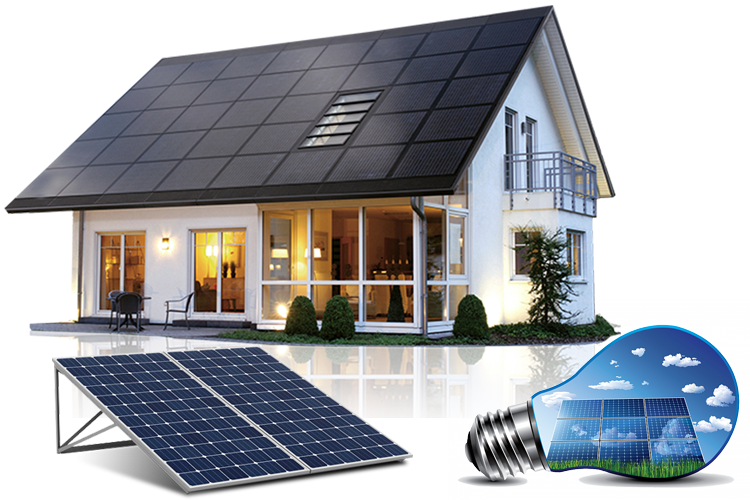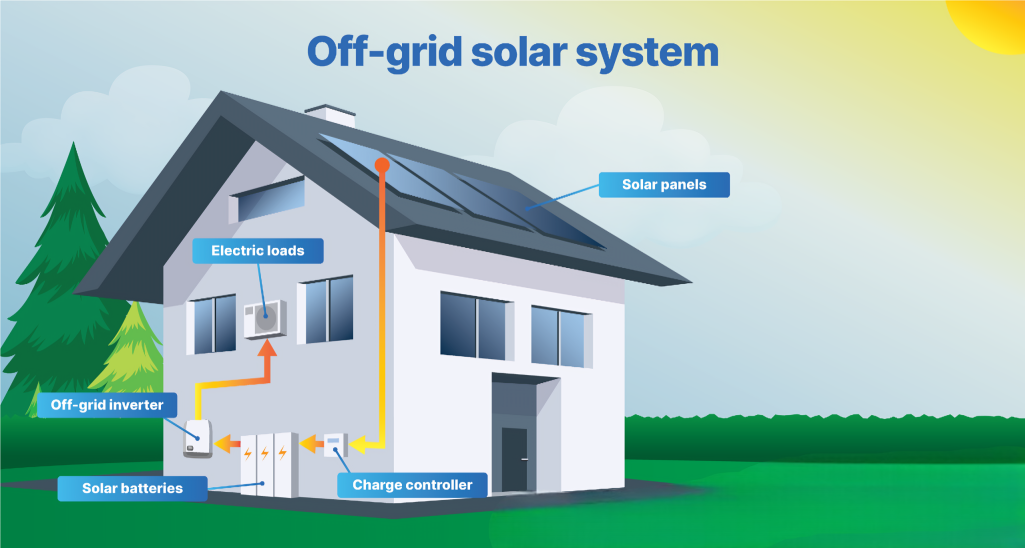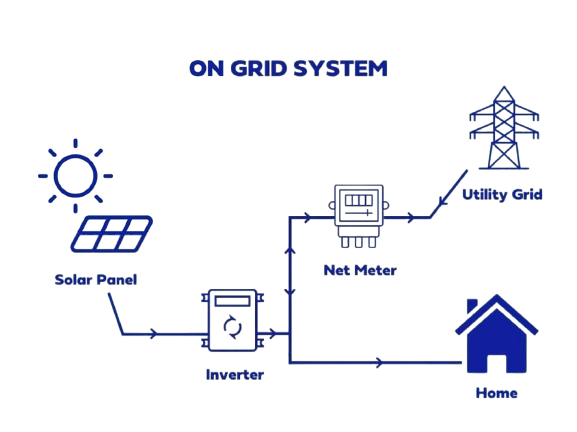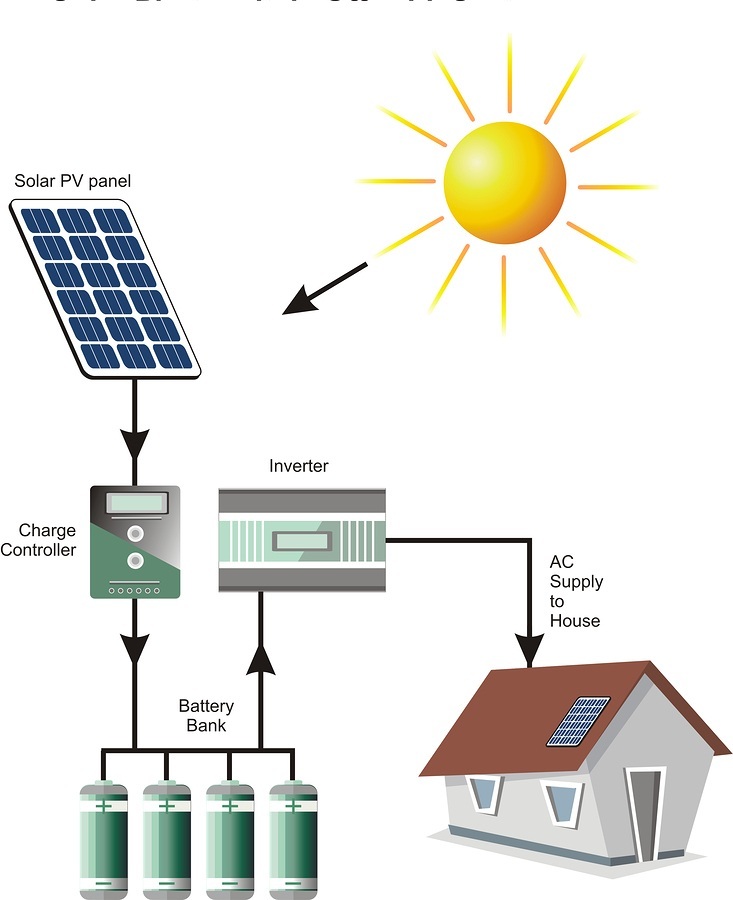Solar Home System

Home Solar System Solutions
At Solarrays, we possess extensive expertise in understanding the unique needs of residential and domestic customers. Our solar systems are carefully designed and installed by considering the specific household appliances, usage habits, site conditions, and the latest solar policies from the EB.
Solarrays tailors solar power solutions to fit the diverse needs of homes, whether for individual houses, apartments, villas, hostels, or ashrams. With our rich industry experience and knowledge focused on Indian households, we provide a wide range of premium Home Solar Power Systems.
Whether it’s Off-grid, On-grid, Hybrid, or a custom combination, we offer personalized and efficient solar power solutions for every home. Our goal is to ensure optimal performance and energy savings for all household applications.
Customized for Homes
Our solar systems are designed to power household appliances like TVs, lights, fans, refrigerators, washing machines, air conditioners, and more. Explore the different types of systems we offer below.
OFF-GRID SYSTEMS FOR HOMES
Off-grid solar systems rely on a battery bank to store surplus energy, ensuring uninterrupted power even when the grid is unavailable. During daylight hours, solar panels produce electricity to run household appliances, and any extra power is stored in batteries. At night, the system seamlessly switches to battery power

Main Features:
- Continuous Power Supply: Designed to provide round-the-clock power from solar energy, utilizing the grid only as a fallback during cloudy or rainy weather.
- Cost Efficiency: Reduces electricity costs by significantly decreasing grid reliance.
- Reliable Energy: Ideal for regions with frequent outages or inconsistent grid service.
- Day: Solar power operates appliances and charges the batteries.
How It Works:
- Day: Solar power operates appliances and charges the batteries.
- Night: The system switches to battery power when solar energy isn’t available.
- Backup: On days with higher power usage or less sunlight, the grid serves as a backup when the battery runs low.
- This configuration guarantees convenience, consistent power supply, and energy cost savings.

On-Grid Solar Power System for Home
An on-grid solar system, also known as a grid-connected system, lacks batteries and depends on the grid to function. During daylight, the system harnesses solar energy to run home appliances, while any surplus power is directed back to the grid through a net meter. Such systems are essential for homes where net metering is available from the electricity board (EB).
The on-grid setup is perfect when:
- Maximizing electricity bill reductions is a top priority for homeowners.
- The electricity supply is stable, with rare occurrences of power cuts or voltage fluctuations.
Working Principles:
- Day: Solar panels generate power. The system’s inverter adjusts the output to match the grid’s requirements, supplying electricity to household devices. Any extra power produced is sent to the grid as exported energy.
- Night: The home draws its power entirely from the grid. Consumption is tracked as imported energy on the net meter.
Net metering in Tamil Nadu, effective from October 2021, calculates the homeowner’s bill by the net units used, subtracting exported units from imported ones. This is financially advantageous for residents.
The on-grid system functions only when both solar and grid power are present. During grid failures or significant voltage drops, the system will turn off in compliance with safety standards. Thus, on-grid systems are a viable option for homes with reliable grid connectivity, ensuring substantial savings on power costs.
Hybrid Solar System
A hybrid solar system is a grid-connected setup that includes battery storage. This system combines elements from both on-grid and off-grid systems. Although it might seem like the hybrid system has the advantages of both, it’s essential to be cautious because the specifications of hybrid inverters can differ, affecting how the system functions and the benefits it provides. Jeevaditya’s hybrid systems are customized to suit the unique requirements of each household.
Working Principle:
Daytime: Solar panels generate electricity during the day, which is stored in batteries. Once the batteries are fully charged, the inverter disconnects from the grid and supplies the household’s energy needs. Any surplus energy is sent back to the grid through a bi-directional net meter, with the exported electricity (in units or kWh) being recorded. During power outages, the hybrid system acts like an off-grid system, adjusting based on the user’s requirements.
Nighttime: At night, power is sourced from both the batteries and the grid, depending on how the hybrid inverter is configured. The electricity used from the grid is recorded as imported power in the bi-directional meter.

Homeowners are charged only for the net electricity consumption (Import minus Export) under the net metering policy, which has been in effect in Tamil Nadu since October 2021. This policy helps significantly reduce electricity costs.